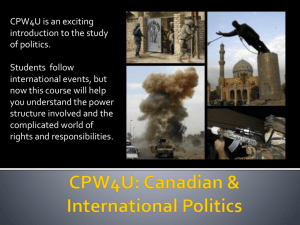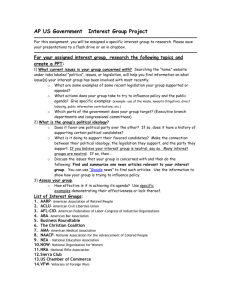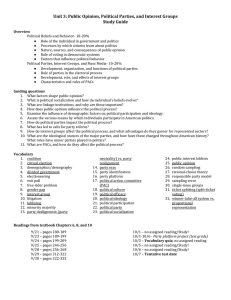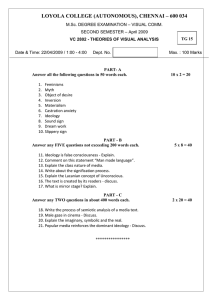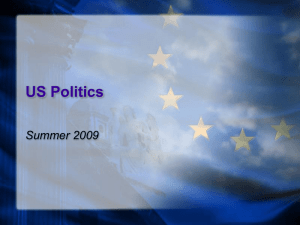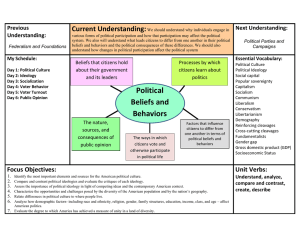Learning Objectives After studying Chapter 6, you should be able to:
advertisement
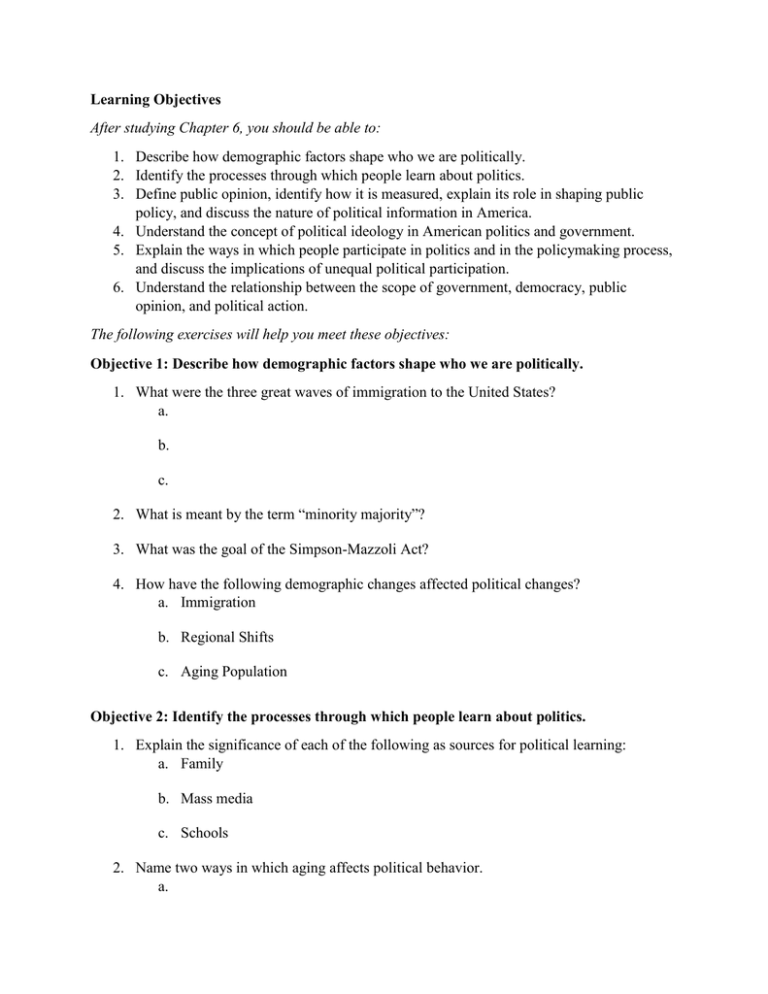
Learning Objectives After studying Chapter 6, you should be able to: 1. Describe how demographic factors shape who we are politically. 2. Identify the processes through which people learn about politics. 3. Define public opinion, identify how it is measured, explain its role in shaping public policy, and discuss the nature of political information in America. 4. Understand the concept of political ideology in American politics and government. 5. Explain the ways in which people participate in politics and in the policymaking process, and discuss the implications of unequal political participation. 6. Understand the relationship between the scope of government, democracy, public opinion, and political action. The following exercises will help you meet these objectives: Objective 1: Describe how demographic factors shape who we are politically. 1. What were the three great waves of immigration to the United States? a. b. c. 2. What is meant by the term “minority majority”? 3. What was the goal of the Simpson-Mazzoli Act? 4. How have the following demographic changes affected political changes? a. Immigration b. Regional Shifts c. Aging Population Objective 2: Identify the processes through which people learn about politics. 1. Explain the significance of each of the following as sources for political learning: a. Family b. Mass media c. Schools 2. Name two ways in which aging affects political behavior. a. b. Objective 3: Define public opinion, identify how it is measured, explain its role in shaping public policy, and discuss the nature of political information in America. 1. What is the key to the accuracy of opinion polls? 2. Explain the technique of random-digit dialing. 3. List three criticisms of public opinion polling. a. b. c. 4. What is the “paradox of mass politics,” according to Russell Neuman? 5. What is the largest impact of declining trust in government since the 1960’s? Objective 4: Understand the concept of political ideology in the context of American politics and government. 1. Fill in the following table concerning political ideology. Ideology Liberals Conservatives General Beliefs Typical Demographic Characteristics 2. Explain how the role of religion influences political ideology in the United States. 3. Fill in the following table on the classification of the ideological sophistication of American voters according to the study The American Voter. Ideological Classification Definition Percent Objective 5: Explain the ways in which people participate in politics and in the policy making process, and discuss the implications of unequal political participation. 1. List five activities of conventional political participation, placing a star next to the most common activity. a. b. c. d. e. 2. Define civil disobedience and give an example. 3. How does minority group status affect political participation? Objective 6: Understand the relationship between the scope of government, democracy, public opinion, and political action. 1. What is the public’s general attitude about the scope of government? 2. Comment on how Americans’ lack of political knowledge and low participation rate affects democracy. Compare and Contrast: Demography and census Melting pot and minority majority Public opinion and political ideology Sample, random sampling, and sampling error Random-digit dialing and exit poll Protest and civil disobedience Reapportionment and redistricting
